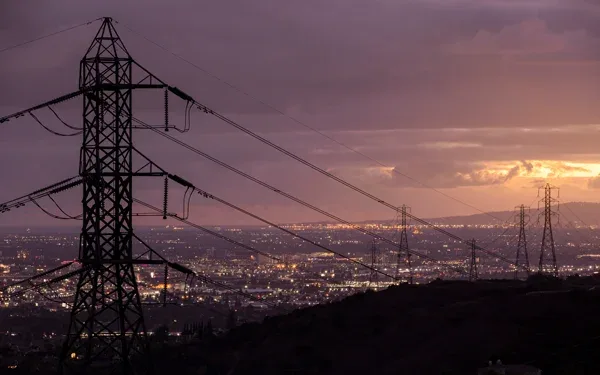2025 Summer Assessment projects sufficient resources overall but extreme conditions can still pose risks

The California Independent System Operator (ISO) has released its 2025 Summer Loads and Resources Assessment, and it shows that the state’s bulk electric system has enough resources to meet a wide range of conditions throughout the summer. Please see the new webpage highlighting some of the Summer Assessment's key findings.
Thanks to the continuous addition of new resources to the grid, our analysis shows a surplus of 1,451 megawatts (MW) of power measured against the industry standard of "one-in-ten” years for loss-of-load expectation. In the ISO’s Summer Assessment, “one-in-ten” means having no more than one occurrence every 10 years where emergency measures are needed to balance supply and demand due to insufficient resources. Starting the summer with an expected surplus is always positive news, especially considering that just three years ago, the Summer Assessment indicated a "one-in-ten" shortfall of 1,700 MW for the ISO-managed grid.
From June through August of this year, weather forecasts show the probability of above-normal temperatures across the Western United States, with the highest chances across the Intermountain West and into the Pacific Northwest, and slightly lower chances for increased temperatures along the coast. In August and September, forecasters continue to see an increased chance of above-normal temperatures across the West.
There is no question the grid is becoming more resilient as the state has accelerated the pace for procurement of new resources and the ISO continues to onboard them efficiently. From September 1, 2024, through April 1, 2025, 3,372 MW was added and an additional 2,163 MW of new resources are expected through June 30, 2025. In addition to all the new capacity, the grid now includes over 11,000 MW of 4-hour lithium-ion batteries, a big boost to summer reliability. Additionally, storage levels in California’s major reservoirs as of April 3, 2025 ranged between 95 to 138 percent of the historical average.
While our analysis indicates sufficient grid capacity to meet demand under expected summer conditions, reliability can be compromised if we experience an extended West-wide heat wave. The same applies to wildfires that can disrupt transmission lines, depending on their location and severity.
During the catastrophic wildfires in Southern California earlier this year, grid reliability was largely maintained throughout the events. However, in past summers, most notably in July 2021 when the giant Bootleg fire in Southern Oregon made some transmission lines unavailable for some time, a range of emergency measures were needed to maintain reliability.
In addition to onboarding new resources, the ISO and state entities have employed a number of contingency measures to continue to improve system preparedness and performance. If needed, the state can access additional energy through its Electricity Supply Strategic Reliability Reserve Program and receive emergency assistance at its borders which can total around 3,379 MW. The ISO’s Western Energy Imbalance Market, which moves energy across the interconnected Western United States in real-time, has also been a significant help in maintaining reliability during past summers, in California and across the broader region.
We must remember that extreme weather and the threat of wildfires remain wildcards when assessing the performance of the bulk electric system during summer. However, our forecast, careful analysis and the addition of new resources provide a solid factual basis for cautious optimism going into the summer of 2025.


